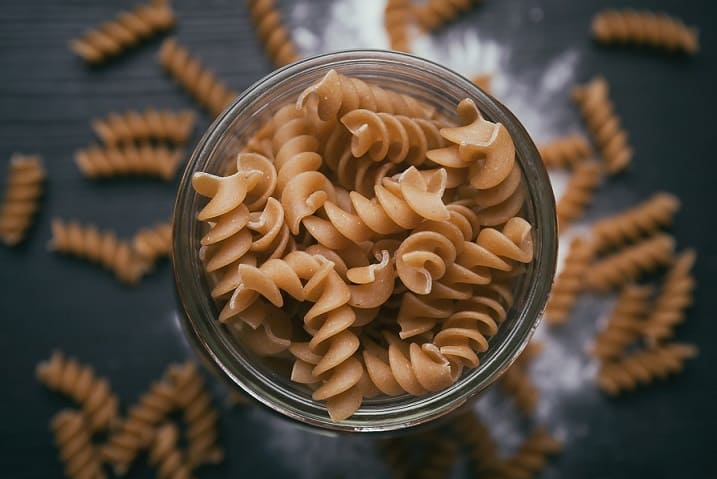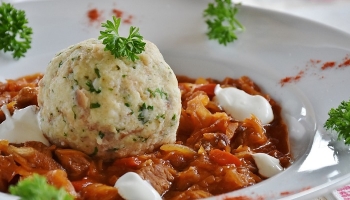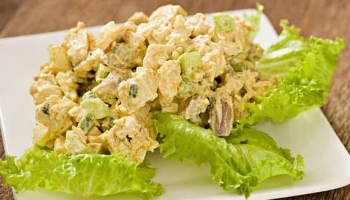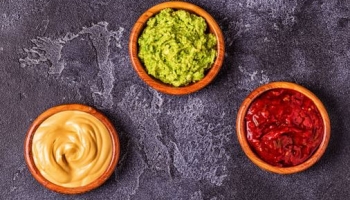If you’re anything like me, you love pasta. To me, nothing else really quite beats a creamy garlic chicken fettuccine alfredo. Many people around the world love pasta.
However, if you’re trying to lose weight or stay fit, you may have been told that “Pasta is fattening!” That’s not strictly true, as that’s not really how food works. You can eat pasta and get fit or even lose fat. Well then, what are the facts about pasta?
Table Of Contents:
What is the Recommended Serving Size of Pasta

Two ounces of pasta is the generally recommended amount of pasta to eat. Two ounces of dry pasta usually measures about half a cup, while the same amount of pasta will measure about a cup when cooked. However, it depends on the type of pasta, so it’s best to weigh the pasta with a kitchen scale to measure it.
back to menu ↑
How much is 2 oz of Pasta in Grams?
You can readily convert ounces and grams back and forth, regardless of what they’re measuring. One ounce is always 28 grams, assuming you are referring to ounces of weight and not fluid ounces of volume. Two ounces of pasta is 56 grams of pasta.
back to menu ↑
How to Measure 2 oz of Pasta?
If you’re cooking a long thin pasta like spaghetti, a good rule of thumb is to grab a handful of noodles as thick as a US quarter. That amount will measure approximately 2 ounces.
However, to be 100% sure you’ve got 2 ounces of pasta, the best measuring tool is a kitchen scale. Set it to customary units (pounds and ounces), and zero the scale with something on it that can hold the pasta. After it’s zeroed out, put the pasta into the container on the scale until it reads 2 ounces.
If you’re making multiple two-ounce servings, simply multiply that by the number of servings you want. Remember, a pound is 16 ounces, so eight servings will weigh a pound.
back to menu ↑
How Many Calories are in 2 Ounces of Pasta?
As lovely as it would be for this question to have precisely one answer, different kinds of pasta have different caloric densities. Some pasta, like spaghetti, can contain around 75 to 110 calories in a 2-ounce portion. However, the same weight as other kinds of pasta, like penne or lasagna, can have 180 or 200 calories. It’s best to look at the package of pasta you’re using to see precisely what the caloric content of the pasta you’re eating will be.
How Many Cups are in 2 Ounces of Pasta?
Typically, 2 ounces of dry pasta will measure about half a cup, while the same amount of pasta will measure about a cup when cooked. It’s best to measure your pasta the same way the packaging measures a serving if you want the most reliable estimate of caloric content.
back to menu ↑
Is 2 oz Pasta Enough for 1 Person?
Two ounces of pasta may not seem like enough for even a single person. After all, it’s really not that much food. However, it can be if you add other types of food to it! A hearty sauce like alfredo or pesto can add much-needed flavor and slightly increase the volume of the dish. You could also add vegetables like broccoli florets, carrots, or any other veggie you like!
This will add much-needed fiber, vitamins, and minerals to the dish and increase its volume substantially. You can also add chicken, an egg, or any other type of meat you’d like! This will add tons of protein and flavor and ensure the dish fills you up much more! A delicious recipe like Italian chicken spaghetti can be a great way to make pasta go a long way!
back to menu ↑
2 oz Pasta Nutrition Facts
While the exact number of calories in your pasta will differ based on the type, the primary macronutrient in pasta is usually carbohydrates. If your goal is a calorie deficit, it would be safe to assume your 56 grams of pasta is entirely made up of carbohydrates. This would imply 224 calories of carbohydrates. However, the actual number may be lower, like 42 grams or even less.
Most kinds of pasta contain some protein, but usually less than 10 grams in a two-ounce serving. Most pasta is low in fat and generally also low in cholesterol. Unenriched pasta doesn’t contain many micronutrients, so adding vegetables or choosing enriched pasta can be great if you need vitamins and minerals.
back to menu ↑
How To Cook Pasta – Quick Tips
The process of cooking pasta is straightforward.
Typically the first thing you’ll want to do is fill a pot with water and add some salt. The amount of water should be based on the pasta box or bag you’re using and will depend on the amount of pasta you’re making. If you’re making multiple servings, simply multiply the water and pasta by the same number as the number of servings you want to create.
If you need a good pot to cook things like pasta and rice, consider David burke cookware! They’re relatively affordable high-quality pots and pans sure to help you make pasta with ease! Once you’ve got the water in the pot, add salt.
You should do this because salty water has greater intermolecular forces between water molecules. Water boils at 212 degrees Fahrenheit or 100 degrees Celsius, while with salt, it will be slightly higher. A much more significant difference made by salt is the reduction in the specific heat capacity of the water.
The specific heat capacity refers to the amount of heat energy required to increase the temperature of a substance, so with a lower heat capacity, the stove can heat it up to its boiling point much faster. Yes, that means there is some truth to the old wives’ tale. However, the most significant effect of adding salt to your pasta water is that the pasta will taste better. Some people also add pepper for this reason, but neither is a requirement to get the pasta to cook properly.
The Final Step
Finally, add your pasta and stir as needed. You’ll want to follow the instructions on the box or bag of your pasta for boiling time. Usually, the instructions will have you cover the boiling pasta at a simmer and leave it for eight to ten minutes. After straining the pasta, it will be ready for you to add all of the delicious things you want to your meal, like sauces, meats, cheeses, and vegetables.
back to menu ↑
Conclusion
Two ounces of pasta can be a staple ingredient in many meals such as macaroni & cheese, spaghetti & meatballs, seafood recipes, and more! You’re now equipped with an idea of how much two ounces of pasta looks like when dried and uncooked when cooked, and even how to weigh your pasta to be sure! If pasta isn’t already one of your favorite things to eat, it probably will be soon.
Shanny
Shanny not only has an exceptional understanding of the foodie mindset and how nutrition works, she has also achieved her Master’s Degree in Education. Outside of her academic achievements, she loves writing food blogs. It's so much more than a list of meals though! Shanny creates helpful cookware guides and delicious recipes that are easy to follow. She does all of this as a food blog writer because she loves it. That's why she spends lots of time testing out different recipes in her own home. She truly is a one-of-a-kind foodie, from her home to yours - with a story to tell, new recipes to indulge in and new tips to tantalize those tastebuds.












